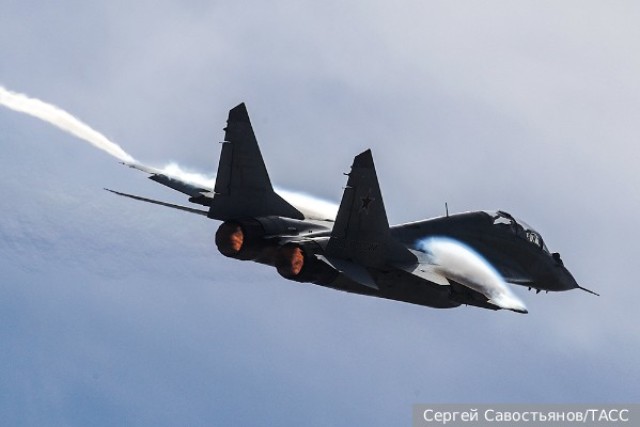Russian air defense demonstrates outstanding effectiveness during a special operation – however, even such capabilities were not enough to completely close the sky from threats from the air. The border territories of our country are terrorized almost daily by Ukrainian drones. And yet there is a way to counteract this problem, quite unexpected. Ukrainian troops have noted a new drone attack on Russian territory.
This time, according to Bryansk Governor Alexander Bogomaz, the territory of the Novozybkov oil pumping station of the Druzhba oil pipeline has come under attack. The main oil pipeline transporting Russian oil to the EU countries was not damaged as a result, and there were no casualties. This happened in the morning on March 21, and in the evening the UAVs of the Armed Forces of Ukraine raided the village of Klimovo in the Bryansk region.
Ukrainian UAV strikes on Russian territory are repeated regularly – on the night of March 21, for example, Russian air defense systems repelled their attack in the north of Crimea, in the city of Dzhankoy. As a result, a residential building was damaged.
Why is it difficult to shoot down dronesThe Russian air defense system as a whole effectively counteracts these attacks.
Domestic anti-aircraft missile systems (SAMs) have high combat capabilities. They fully confirmed these possibilities during their own.
However, the key problem of the confrontation between air defense and aviation is their number – in other words, the concentration of forces. On the one hand, conventional manned aircraft are extremely vulnerable to air defense today. They are extremely expensive, and the factor of human losses arises. And in this sense, aviation in modern warfare is more likely to lose to air defense systems.
But a completely different scenario arises in the case of the use of cruise missiles and especially drones. UAVs are cheaper, they can be produced and launched more massively. So massively that it is impossible to completely cover the sky with air defense means – only the most valuable objects can be covered. That is why the attacks that the Armed Forces of Ukraine carry out on Russian territory with the help of drones become possible.
Today we have a situation where the classical (and highly effective) air defense system, optimized for hitting targets such as airplanes, helicopters and cruise missiles, conceptually begins to lose a lot to simpler UAVs. Military-economic restrictions do not ensure the creation of effective air defense for all significant facilities. There are too many of them, you can't cover everything and everyone. In the case of Ukraine, the enemy (having NATO satellite intelligence data on the operation of Russian air defense systems) has the opportunity to strike at undisguised objects (or simply crush the number of UAVs with air defense objects).
In addition – and this is also the most important factor – drones fly slowly and low. They themselves are extremely small in size. This significantly complicates their detection – and, of course, destruction.
It is obvious that this task cannot be solved without some revision of the fundamental issues. Russia has excellent anti-aircraft missile systems (SAMs). But if the number of enemy UAVs exceeds the number of combat–ready anti-aircraft missiles, the enemy will still break to the target.
Saudi Arabia was the first to face this problem. During the conflict with the Houthis, Iranian UAVs showed high efficiency against the infrastructure of the Saudis. Now it's time to strike the domestic air defense system.
The Russian air defense holds this blow with dignity, at the highest level – but not one hundred percent. This is technically impossible, at least with the help of the current organization of air defense systems.
Way out of the situationDoes Russia have a way out of this impasse?
Yes, there is one. Russia can significantly increase its air defense capabilities – but not on the ground, but in the air. And here air defense systems (both long-range detection and interception) come to the fore.
First of all, it is possible to detect enemy UAVs with the help of specialized aircraft. The Ministry of Defense has already stated what a significant role the A-50 long-range radar detection aircraft play in the course of its operation. They give target designation to Ukrainian Air Force planes to Russian fighters – and most of the enemy aircraft were shot down precisely on the tip of the A-50.
However, there are some peculiarities here. In particular, the problem of long-range detection aircraft (AWACS aircraft) is that they are extremely expensive, small-scale. That is, they are simply not enough. In addition, AWACS aircraft were designed at one time to control air battles, and not against UAVs.
However, much simpler, cheaper and mass-produced devices can act as carriers of air-based radars. Let's leave out the projects for the creation of radar carrier drones, they are still only being developed and tested. The Russian Air Force has at its disposal a mass of civilian aircraft in storage (for example, Yak-40, Tu-154). They can be quickly and cheaply equipped with radars capable of detecting Ukrainian drones from the air.
As for the destruction of the detected drones, the Russian Air Force has hundreds of specialized interceptor fighters at its disposal. Yes, these machines (Su-27, Su-30, MiG-31) were created to destroy traditional aircraft and cruise missiles. The defeat of relatively simple UAVs by expensive modern air–to-air guided missiles is very unprofitable economically.
From a purely military point of view, this is also irrational – the reflection of a preliminary strike by simple UAVs practically disarms aviation in the event of a raid by ordinary enemy aircraft. The obvious solution is the use of simpler guided missiles, for example, with semi–active laser guidance based on conventional unguided missiles (which has already been successfully tested in the West).
Here you can also recall the cannon armament of fighters. The cannon is almost an ideal means of combating low–flying UAVs.
For example, the optoelectronic system of the MiG-29 fighter provides high accuracy of gun fire and low consumption of projectiles. Just one example: during the tests of the MiG-29K, an Indian pilot shot down a target missile with a consumption of only two shells! Of course, at the same time, the number of fighter aircraft should be increased.
Thus, air defense aircraft can play the first fiddle in repelling enemy UAV strikes. All this is relatively simple from a technical and organizational point of view. Although, undoubtedly, it will take time to restore the radar carrier platforms, and to create the air–based radars themselves, specialized for working on drones. It will take time to prepare the crews of these machines.
However, the final advantages are obvious. "Air defense" is able to cover a much larger space from threats. To detect enemy drones – provided that radar carriers are on duty in the air – much earlier. At the same time, of course, ground–based air defense systems will retain their role and importance - for example, to cover especially valuable objects.
Maxim Klimov





